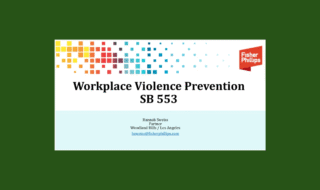Topics:
June 30, 2023 Last Edit: June 5, 2025
NFIB Nevada in the News on the Minimum Wage
- The Minimum Wage is an Entry-Level Wage Earned Mostly by Teens and Young Adults Minimum-wage earners make up just 1.4% of all hourly paid workers. “Minimum wage workers tend to be young. Although workers under age 25 represented nearly one-fifth of hourly paid workers, they made up 44 percent of those paid the federal minimum wage or less. Among employed teenagers (ages 16 to 19) paid by the hour, 4 percent earned the minimum wage or less, compared with 1 percent of workers age 25 and older.” — U.S. Bureau of Labor Statistics Characteristics of minimum-wage workers.
- Minimum Wage Earners are Not Trying to Sustain Families “Within that tiny group [of minimum-wage earners], most of these workers are not poor and are not trying to support a family on only their earnings,” writes economist Jeffrey Dorfman. “In fact, according to a recent study, 63 percent of workers who earn less than $9.50 per hour (well over the [federal] minimum wage of $7.25) are the second or third earner in their family and 43 percent of these workers live in households that earn over $50,000 per year. Thus, minimum wage earners are not a uniformly poor and struggling group; many are teenagers from middle class families and many more are sharing the burden of providing for their families, not carrying the load all by themselves.”
- Raising the Minimum Wage Lifts No One out of Poverty “… evidence simply does not provide a strong case for using minimum wages to reduce poverty,” writes David Neumark, a national expert on the minimum wage, for the Federal Reserve Bank of San Francisco. “Similarly, recent research does not provide conclusive evidence that a higher minimum reduces government spending on welfare and other programs to support poor families, with the possible exception of food stamps.”
- Raising the Minimum Wage Benefits Few While Punishing Many More “We estimate that a 10 percent increase in the state level effective minimum wage reduces vacancies [job opportunities] by 2.4 percent in the same quarter, and the cumulative effect is as large as 4.5 percent a year later. The negative effect on vacancies is more pronounced for occupations where workers typically have lower educational attainment (high school or less) and in counties with higher poverty rates.” – Federal Reserve Bank of Cleveland.
- Raising the Minimum Wage is Devastating on the Small Business Economy When Congress considered doubling the federal minimum-wage rate under the Raise the Wage Act of 2021, NFIB warned, “The negative effects of the proposed legislation will fall disproportionately on small employers and their workers as businesses with fewer than 500 employees will account for 57% of job losses (over 900,000 lost jobs) and businesses with fewer than 100 employees will account for 43% of job losses (nearly 700,000 jobs). Small businesses are far less likely than larger businesses to have cash reserves or profit margins to absorb the increase in labor costs.”

State:
Get to know NFIB
NFIB is a member-driven organization advocating on behalf of small and independent businesses nationwide.
Related Articles

December 23, 2025
Please Vote Your 2026 State Ballot
Choices you make center NFIB’s lobbying agenda in Carson City
Read More


December 22, 2025
NFIB California Main Street Minute, December 22-26
2026 legislative agenda announced, new minimum wage rate, have you complied…
Read More


December 11, 2025
Florida Small Business Optimism Edges Up in November
Labor quality is Main Street’s top issue
Read More


December 11, 2025
Pennsylvania December 2025 Legislative Update
An update on the General Assembly & latest NFIB action alerts
Read More







